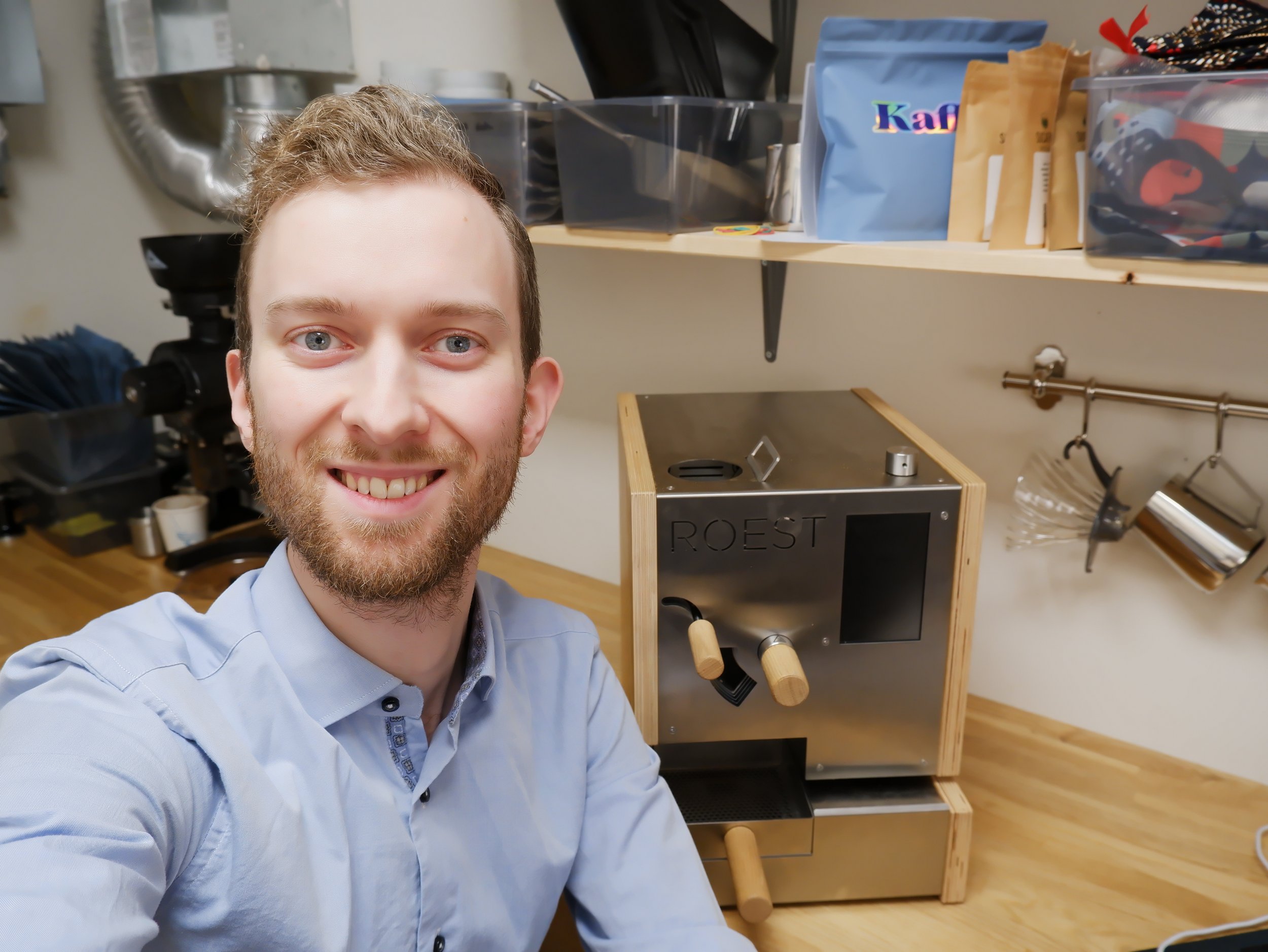Adrian Berg's WBC journey
Adrian Berg, coffee roaster and two-time Norwegian Barista Champion, got the exciting opportunity to participate in the World Barista Championship 2021 (WBC). He was determined to roast his own competition coffee, and luckily for us, decided to use ROEST Sample Roaster on his WBC journey!
We caught up with Adrian to find out how he prepared and built his final WBC-espresso profile with the help of ROEST:
Hello, my name is Adrian and I am the 2019 and 2020 Norwegian Barista Champion. I’ve been a competition barista for many years, but it was only after I started roasting my own coffee that I was able to win. For my 2020 WBC routine I knew I wanted to continue to roast the coffee myself, but I was also worried about committing large amounts of expensive coffee to trial roasting. So I reached out to ROEST who were super-kind to loan me one of their sample roasters.
Selecting Competition Coffee
My routine was built around the concept that flavour notes are not good enough tools when it comes to communicating flavour to customers. In order to make that point, I knew that I needed coffee with a lot of clarity that would be easy to describe so that I could deconstruct and explore how we can use flavour notes differently. Patrik Rolf at April Coffee Copenhagen helped me source my competition coffee and I ended up picking two: a gesha and an SL28 from Volcán Azul in Costa Rica, both anaerobic fermented and incredibly crisp and bright.
Trial Roasting
Having the ROEST available to trial roast the coffee was incredibly useful. I spoke with Matt Winton (who went on to win the World Brewers Cup!) about building a profile for espresso on the ROEST and after a lot of trial with a placeholder coffee I stumbled upon Wojtek Bialczak’s air temp profile on the ROEST community forum. I used that as my base profile to play around with the settings and find the right roast level.
Challenge of Espresso
“The biggest challenge with roasting for espresso on a sample roaster is that espresso generally needs to have higher solubility to work well, which requires longer roast times or a darker roast.”
Most profiles I found for the ROEST were anywhere from 4 to 6 minutes long, much too short for espresso. Using Wojtek’s air temp profile I was able to get roasts that were 8-9 minutes long. It started with a high charge temp, a short soaking period, then ramping the air temp back up before gradually bringing it down throughout the roast. This gave a very stable declining rate of rise and stretched the roast time beyond the six-minute mark.
(Development) Time is Key
The second challenge was finding the right development time. Most profiles I came across had a development time between 40 to 60 seconds. For an 8 minute roast 60 seconds is only a 12.5% development time ratio, which isn’t a lot for espresso. Since the air temp profile gave a steadily declining RoR the increase in bean temperature after first crack wasn’t that big either, so the coffee came out quite light with a very high and sharp acidity as espresso. The solution was to lower the air temperature after a little bit more from yellowing to increase the total roast time to 9 minutes and give the coffee a 90 second development time, increasing the DTR to 16%.
Saving Time with ROEST
If this all starts to sound a bit too technical, let’s just say it balanced out the coffee, made it more soluble and made a very nice espresso.
“For consistency I roasted several 100g batches back to back on the ROEST and blended them together to form a single batch. That was probably what I enjoyed the most about working with the ROEST.”
Once I was happy with the profile, recreating it was completely automatic with Auto First Crack Detection and playback of the profile. That freed up my hands and brain to continue working on my presentation and concept.
Want to know more about Adrian’s WBC process? Check out our latest video!
Reflections
I’m incredibly thankful to ROEST for the opportunity to work with their roaster. It helped me reach a final roast profile much quicker and with much less green coffee wastage, saving me time and money, both currencies that are incredibly valuable when preparing for a World Championship. I only took 25th place but I learned a lot from the experience. Seeing the passion, skill and dedication of the champions who went on to the semi-finals and finals was incredibly motivating. I look forward to the next time I’ll be in a coffee competition and continue to grow as a barista, roaster and person. Thank you, that’s my time!
Thank you, Adrian, for sharing your knowledge with the ROEST community. We are honored to have been a part of your WBC journey, and we’ll be rooting for you in all your future endeavors!
Text and photography by Adrian Berg
Want to know more about how ROEST can be used in competitions? Wojtek Bialczak participated in the World Barista Championship in 2019, and used ROEST sample roaster! He shared how it helped him and how it could help you:


